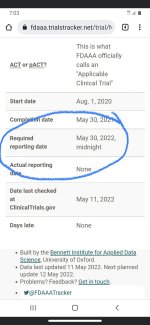Whenever the NaNose device comes to market for Covid testing at the stated original cost of $2 to $3 (see - Professor Haick) a test there will be an incredible amount of continuing demand world wide:
The Guardian
Explainer: why are Covid infection rates in Australia so high compared with other countries?
Donna Lu - 5h ago
© Provided by The Guardian
As three new Omicron subvariants – BA.2.12.1, BA.4 and BA.5 – begin to spread in Australia, health authorities are warning of winter surges in both Covid and the flu.
Reported Covid infection rates in Australia are already among the highest in the world. As of
data from 2 May, Australia’s average daily infection rate is 1,515 cases per million people – the second-highest in the world for countries with a population greater than 1 million, after New Zealand (1,566 cases per million).
On Wednesday, Western Australia recorded its highest-ever daily Covid figures with 9,782 cases.
Related:
Seventeen cruise ship passengers isolating in Darwin after Covid outbreak
Despite its dominance in people’s lives and daily press coverage over the past two years,
Australia’s response to the Covid pandemic has not featured prominently during the election campaign.
Why are reported infection rates in Australia so high compared with other countries – and despite sustained transmission of the virus, why do many now feel apathetic about Covid?
Why are there so many Covid cases in Australia?
Prof
Catherine Bennett, the chair in epidemiology at Deakin University, said Australia’s high reported infection rate may be the result of high “case ascertainment”.
Although PCR testing rates have dropped off in Australia, “we’re probably still doing it more so than anywhere else in the world”, Bennett said. “We still have free PCR testing. A lot of countries don’t.”
The number of confirmed Covid cases shouldn’t be relied on in isolation, Bennett said. “If you compare us to, say, the UK, they look much better for infection rates,” she said. “The UK’s confirmed case rate is 128 cases per million – less than a tenth of Australia’s 1,515 figure.
“Yet their hospitalisation rate per million is 209, and ours is 124. It suggests that they probably have twice as many [true] cases [as Australia].”
Prof Adrian Esterman, the chair of biostatistics at the University of South Australia, said the actual case numbers in Australia are still many times the number of reported cases.
“If we look at our PCR test positivity rates, they’re still very high,” he said. “In the whole of Australia … 20% of all PCR tests are coming out positive. It tells us that there is an awful lot of Covid that isn’t being diagnosed and we do require more testing – the World Health Organization wants that percentage to be less than 5%.”
Esterman believes the sustained high transmission is due to the removal of public health measures across the country. “It’s a ‘let it rip’ policy,” he said. “We’re getting more and more people reinfected.”
My opinion only DYOR
FF
AKIDA BALLISTA




